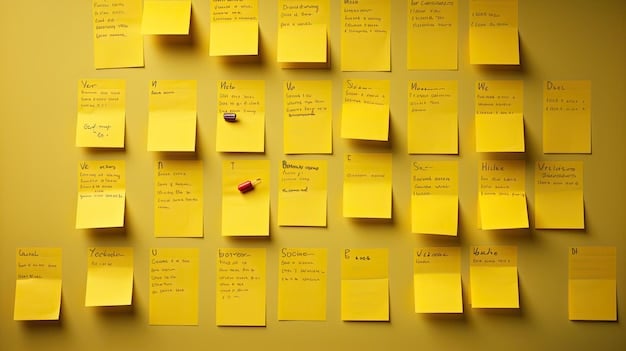Master Time Management: Tips to Boost Productivity in the UK

Anúncios
Improve your time management by implementing proven strategies such as prioritising tasks, eliminating distractions, and utilising effective planning tools to achieve more in less time, boosting productivity and reducing stress.
Are you feeling overwhelmed by endless to-do lists and struggling to find enough hours in the day? It’s a common challenge, especially with the demands of modern life in the UK. But what if you could improve your time management and reclaim control of your schedule? Let’s explore proven strategies to help you get more done in less time, boosting your productivity and reducing stress.
Anúncios
Understanding the Importance of Time Management
Effective time management isn’t just about ticking off tasks; it’s about increasing your efficiency, reducing stress, and achieving a better work-life balance. In the fast-paced environment of the UK, mastering this skill is crucial for both personal and professional success. Let’s delve into why prioritising your time is so important.
Boosting Productivity and Efficiency
One of the most significant benefits of time management is the increase in productivity. When you know how to allocate your time wisely, you can accomplish more in less time.
Anúncios
Reducing Stress and Improving Well-being
Poor time management can lead to chronic stress and burnout. By taking control of your schedule, you can reduce the feeling of being overwhelmed and improve your overall well-being.
- Prioritise tasks: Learn to differentiate between urgent, important, and non-essential activities.
- Set realistic goals: Break down large projects into manageable tasks.
- Avoid multitasking: Focus on one task at a time to improve concentration and accuracy.
In conclusion, understanding the importance of time management is the first step towards a more productive and balanced life. By acknowledging the benefits of efficiency and reduced stress, you can motivate yourself to implement effective strategies.
Identifying Your Time Wasters
Before you can improve your time management, it’s essential to identify where your time is currently being wasted. These ‘time thieves’ can come in various forms, from social media distractions to inefficient meetings. Understanding these pitfalls allows you to strategically eliminate them and reclaim valuable minutes.
Social Media and Digital Distractions
In today’s digital age, social media and constant notifications can be major time-wasters. The urge to check your phone every few minutes can significantly disrupt your focus.
Inefficient Meetings and Communications
Meetings that lack a clear agenda or purpose can quickly eat into your schedule. Similarly, unclear communication can lead to misunderstandings and wasted effort.

- Use website blockers: Tools like Freedom or Cold Turkey can limit your access to distracting websites.
- Schedule specific times for emails: Avoid checking your inbox constantly; allocate specific times each day.
- Communicate clearly: Ensure your emails and messages are concise and to the point to avoid back-and-forth clarifications.
Identifying your time wasters is crucial for effective time management. By acknowledging these distractions and implementing strategies to mitigate them, you can free up valuable time for more productive activities.
Prioritising Tasks Effectively
Improve your time management by prioritising tasks effectively. Not all tasks are created equal; some are more crucial to your goals than others. Learning to differentiate between what’s urgent and important is key to ensuring that you focus your efforts on the right things. Let’s explore different methods for prioritising your tasks.
The Eisenhower Matrix (Urgent/Important)
The Eisenhower Matrix, also known as the Urgent-Important Matrix, is a powerful tool for prioritising tasks based on their urgency and importance.
The Pareto Principle (80/20 Rule)
The Pareto Principle, or the 80/20 rule, suggests that 80% of your results come from 20% of your efforts. Applying this principle to time management means identifying the 20% of tasks that yield the most significant results.
- List your tasks: Write down everything you need to accomplish.
- Assess urgency and importance: Use the Eisenhower Matrix to categorise your tasks.
- Delegate or eliminate: Outsource or remove tasks that are neither urgent nor important.
Prioritising tasks effectively will significantly enhance your productivity. By using tools like the Ersenhower Matrix and the Pareto Principle, you can ensure that your time and energy are focused on the most impactful activities.
Setting Realistic Goals
Setting achievable goals is one of the most fundamental actions to improve your time management. Unrealistic expectations can lead to disappointment and decreased motivation. By breaking down significant objectives into smaller, manageable tasks, one can create a sense of achievement and maintain momentum.
Breaking Down Large Tasks
Large, complex projects can seem daunting and overwhelming. Breaking these projects down into smaller, more manageable tasks makes them less intimidating and easier to tackle.
Using the SMART Framework
The SMART framework—Specific, Measurable, Achievable, Relevant, and Time-bound—is a valuable tool for setting effective goals. Applying these criteria ensures that goals are well-defined and attainable.

- Define specific goals: Clearly outline what you want to achieve.
- Ensure measurability: Establish metrics to track progress.
- Set realistic deadlines: Provide a timeline for achieving each goal.
Setting realistic goals is essential for effective time management. By breaking down large tasks into smaller steps and using the SMART framework, you can create a sense of accomplishment and maintain motivation.
Utilising Time Management Tools and Techniques
In today’s digital age, there’s a plethora of tools and techniques available to help you improve your time management. From digital calendars to productivity apps, these resources can streamline your planning, enhance your focus, and optimise your workflow. Let’s dive into some of the most effective tools and techniques.
Digital Calendars and Planners
Digital calendars, such as Google Calendar, Outlook Calendar, and Apple Calendar, are indispensable for scheduling appointments, setting reminders, and visualising your daily, weekly, and monthly commitments.
Productivity Apps and Software
Numerous productivity apps and software solutions are designed to help you manage tasks, track time, and enhance focus. Apps like Todoist, Trello, and Asana offer robust features for organising projects and collaborating with teams.
- Experiment with different tools: Find the apps and techniques that best suit your style.
- Integrate tools: Connect your calendar with your task management app for streamlined overview.
- Set reminders: Make use of notifications to stay on track with deadlines and priorities.
Utilising the right time management tools and techniques can significantly enhance your productivity. By exploring and integrating these resources, you can streamline your schedule, focus your efforts, and achieve your goals with greater efficiency.
Maintaining Focus and Avoiding Procrastination
Even with the best- laid plans, it can be challenging to maintain focus and avoid procrastination. These common obstacles can derail your productivity and prevent you from achieving your goals on time. It’s essential to develop strategies for staying on track and overcoming these hurdles.
The Pomodoro Technique
The Pomodoro Technique is a time management method that involves working in focused 25-minute intervals, separated by short breaks.
Eliminating Distractions
Creating a distraction-free environment is critical for maintaining focus. This involves minimising external interruptions and managing internal distractions.
- Create a dedicated workspace: Set up a quiet area where you can work undisturbed.
- Use noise-cancelling headphones: Block out external noise to enhance focus.
- Reward yourself: Celebrate milestones to stay motivated.
With time management techniques and tools you can improve your time management in your everyday life. By implementing strategies such as the Pomodoro Technique and minimising distractions, you can create a conducive environment for focused work and ultimately boost your productivity.
| Key Point | Brief Description |
|---|---|
| ⏰ Prioritise Tasks | Focus on the most important tasks first using methods like the Eisenhower Matrix. |
| 🚫 Eliminate Distractions | Minimise interruptions from social media and emails to enhance concentration. |
| 🎯 Set Realistic Goals | Break complex projects into manageable steps using the SMART framework. |
| 📱 Use Time Management Tools | Leverage digital calendars and productivity apps to streamline scheduling and task tracking. |
Frequently Asked Questions (FAQ)
▼
Effective time management enhances productivity, reduces stress, and improves work-life balance. It ensures that you focus on high-priority tasks, leading to greater efficiency and accomplishment.
▼
Monitor your daily activities and note where you spend most of your time. Common time wasters include social media, unnecessary meetings, and constant email checking. Identify and minimise these distractions.
▼
The Eisenhower Matrix is a tool for prioritising tasks based on urgency and importance. It helps you decide what to do immediately, schedule for later, delegate, or eliminate altogether, ensuring focus on critical activities.
▼
Break down large goals into smaller, manageable tasks. Use the SMART framework to ensure goals are Specific, Measurable, Achievable, Relevant, and Time-bound. This approach makes goals less daunting and easier to track.
▼
The Pomodoro Technique involves working in focused 25-minute intervals, followed by a short break. After four intervals, take a longer break. This method enhances focus and prevents burnout by structuring work into manageable blocks.
Conclusion
In conclusion, mastering time management is a journey that requires consistent effort, self-awareness, and the willingness to adapt. By implementing the strategies and tools discussed in this article, you can improve your time management and achieve greater productivity, reduce stress, and reclaim control of your day.





